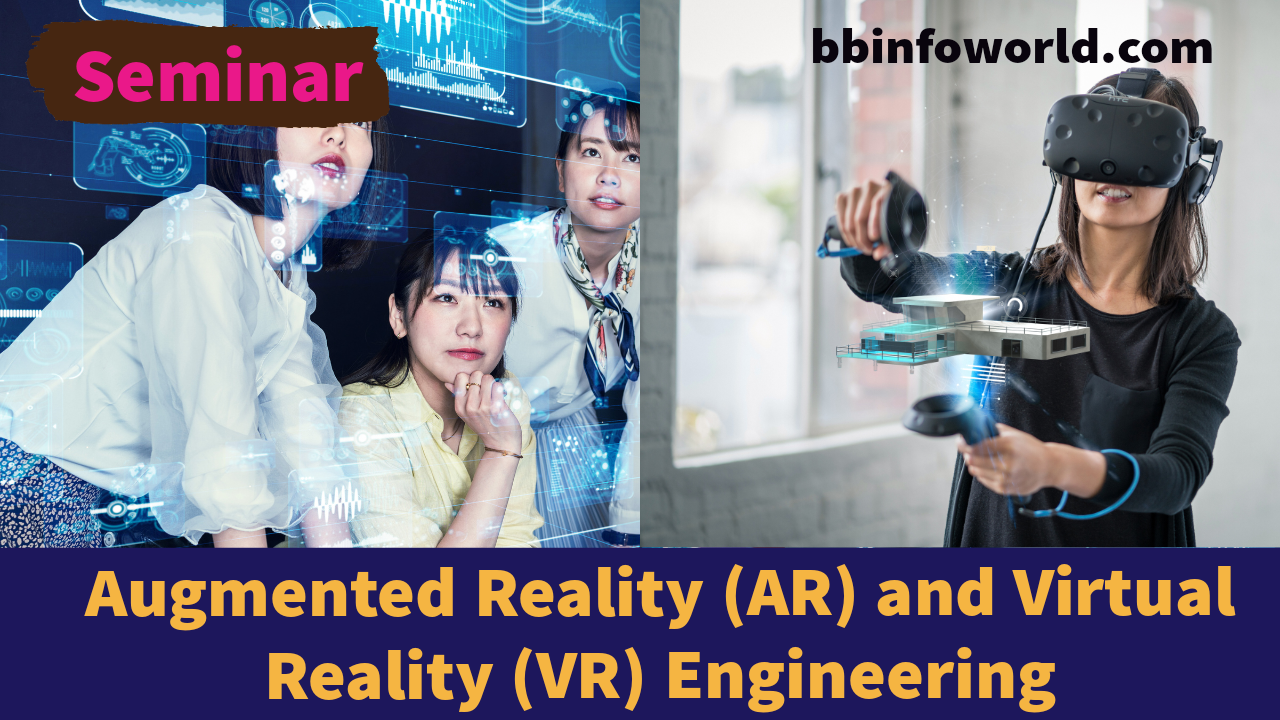
Augmented Reality (AR) and Virtual Reality (VR) Engineering
Explore the engineering behind AR and VR technologies and their applications in industries like gaming, healthcare, and education.
Introduction:
Augmented Reality (AR) and Virtual Reality (VR) have transformed the way we interact with the digital world. These technologies blend the physical and virtual realms, offering immersive experiences that have applications across various industries. This seminar delves into the engineering aspects of AR and VR, uncovering the underlying technology, their working principles, advantages, limitations, and their diverse applications in fields like gaming, healthcare, and education.
Working Principle:
- Augmented Reality (AR): AR overlays digital content onto the real world. Using cameras and sensors, AR devices track the user’s environment and position, superimposing digital objects, information, or animations onto the physical world.
- Virtual Reality (VR): VR immerses users in a completely digital environment. Specialized headsets with displays cover the user’s field of view, and sensors track their head movements, providing a realistic sense of presence within the virtual space.
Advantages:
- Enhanced Experiences: AR and VR technologies offer immersive experiences that engage multiple senses, enhancing learning and engagement.
- Training and Simulations: AR and VR provide realistic environments for training in industries like aviation, healthcare, and military.
- Design and Prototyping: Engineers use AR and VR to visualize and manipulate 3D models, enhancing design and prototyping processes.
- Remote Collaboration: AR and VR enable remote teams to collaborate in shared virtual spaces, enhancing communication and productivity.
- Healthcare Visualization: Medical professionals use AR and VR to visualize complex medical data and perform virtual surgeries.
Limitations:
- Cost: High-quality AR and VR equipment can be expensive, limiting widespread adoption.
- Motion Sickness: Prolonged use of VR can lead to motion sickness or discomfort in some users.
- Content Development: Creating high-quality AR and VR content requires specialized skills and resources.
- Hardware Constraints: AR and VR hardware may have limitations in terms of processing power and display quality.
Applications:
- Gaming: AR and VR gaming offer immersive experiences, interactive storytelling, and realistic simulations.
- Education: AR and VR enhance learning by creating interactive and engaging educational content.
- Healthcare: VR is used for pain management, exposure therapy, and surgical training. AR aids in medical visualization.
- Architectural Visualization: AR and VR enable architects and designers to showcase projects and explore designs in immersive 3D environments.
- Retail: AR is used for virtual try-ons, enhancing the shopping experience.
- Industrial Training: AR and VR provide realistic training simulations for industrial processes and equipment operation.
AR and VR are redefining how we interact with digital content, bridging the gap between the physical and virtual worlds. The engineering principles that underpin these technologies are essential to their success. As AR and VR continue to evolve, their impact on industries and human experiences will grow, driving innovation and opening new frontiers of possibility. This seminar offers a comprehensive exploration of AR and VR engineering and their diverse applications across various sectors.



